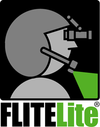Oct - An experienced two pilot crew flying a small GA aircraft recently flew into a mountain at night. This Controlled Flight Into Terrain (CFIT) tragedy is still under investigation, but it provides a chance to think about flight planning and some of the terrain illusions that we can see when we are flying at night.
The first place to start is with the chart. Minimum safe altitudes should be a part of any flight planning. Another great tool for the cockpit is the Garmin 496 (or other terrain system), which while advisory in nature, verifies what we have planned on the chart. Put your planning together with the terrain avoidance features of these advanced systems, and your situational awareness increases dramatically.
The quality and quantity of back lighting when flying near terrain, under night vision goggles, or unaided is a critical consideration. Our eyes (and night vision goggles) have a gain sensitivity. Imagine flying toward terrain with a bright city at your back, as you get close to the terrain you make a turn back toward the city - and then your terrain visibility goes to zero - because now you are looking into the lights of the city.
Other terrain lighting illusions are similar to the false horizon effect with clouds. Cultural lighting on a slope can appear to be level when in fact it is not.
One way that we combat these illusions is to vary the course of flight when near terrain, and change the horizontal angle of which we approach it. Changing course, say 30 degrees to the right, and then 30 degrees to the left will put the terrain and lights on the ground (if there are any) in motion with different relative motion rates - this will allow you to have a better picture of the makeup of the terrain.

Be the first to comment